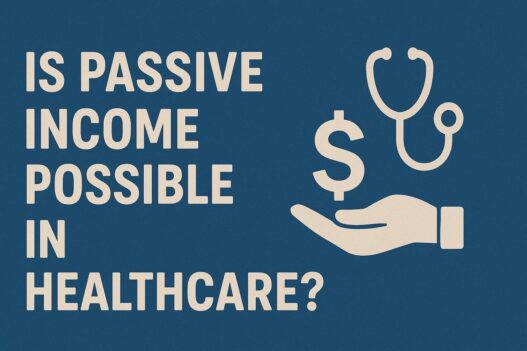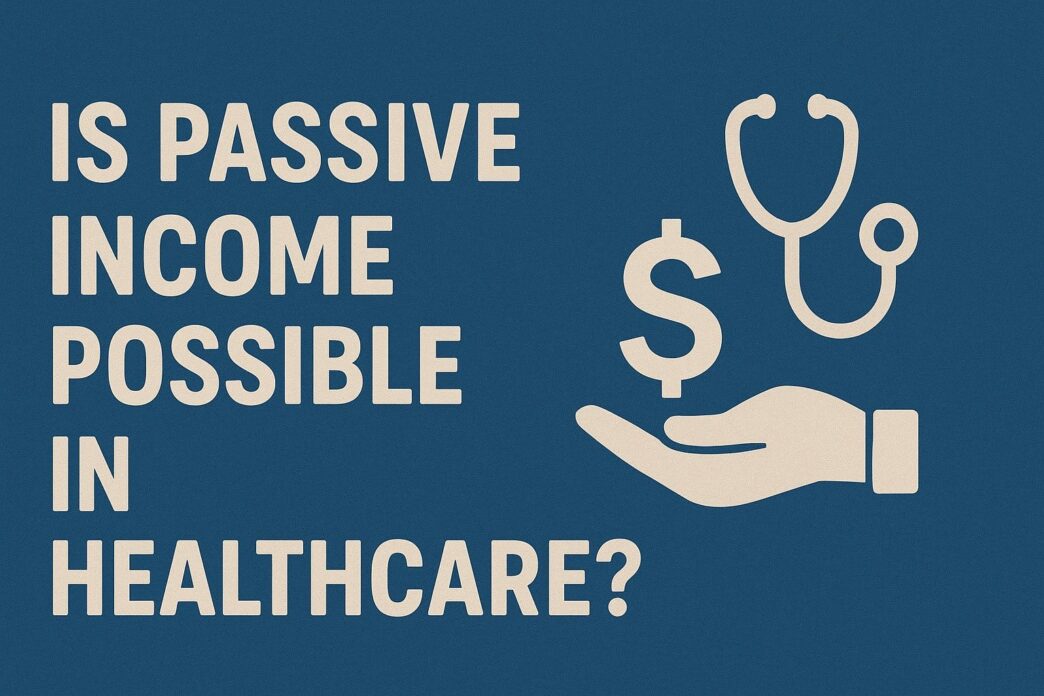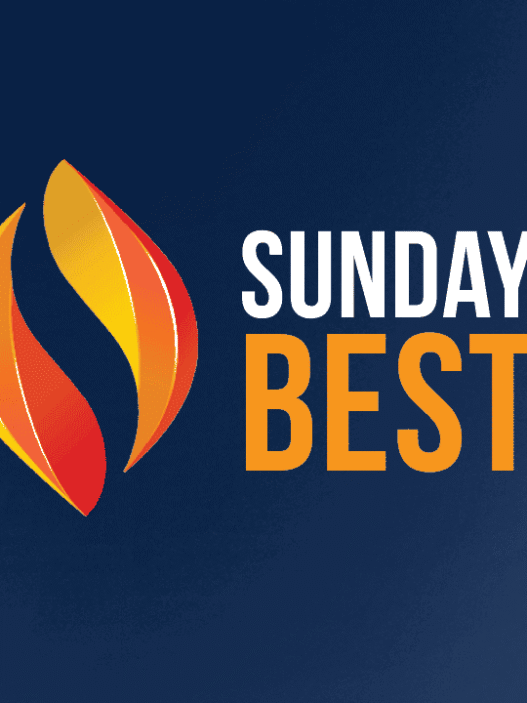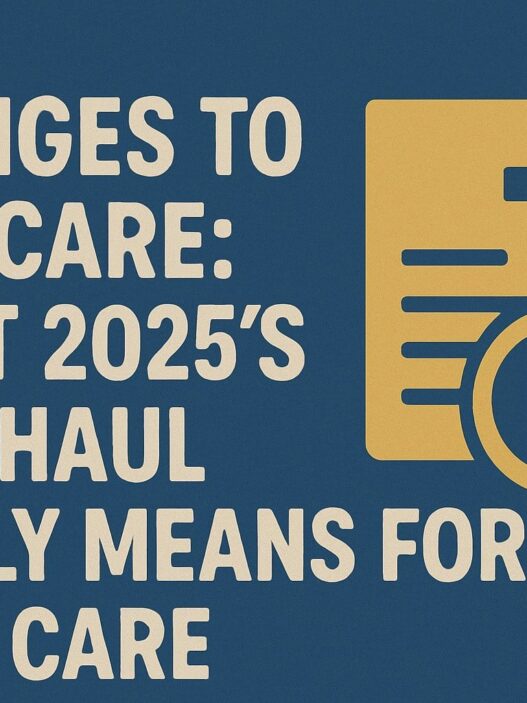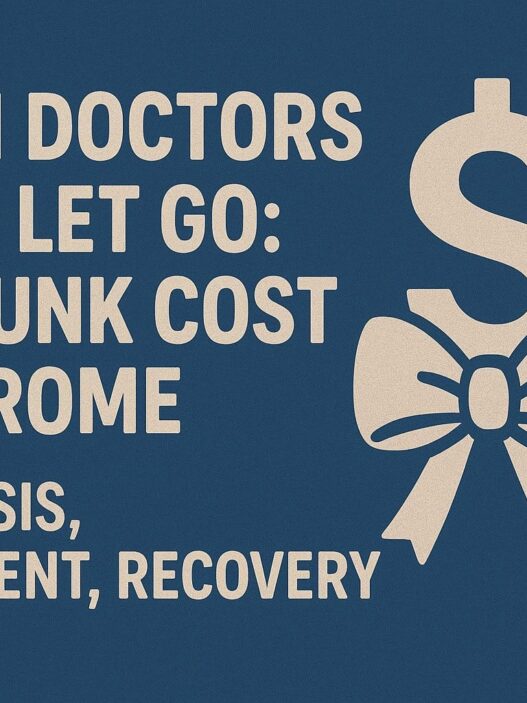74% of practicing physicians say burnout would drive their decision to leave clinical medicine. Many plan to get out as early as their 50s:
For a comfortable retirement, physicians expect to have around $4M in savings, and most already have a majority of that shored up. But what if there was a way to accelerate those savings even more? In ways that wouldn't require much time or effort on your part?
We've all heard the term “passive income” before, but is there truly such a thing? A way to make money in medicine without lifting a finger?
Paid surveys, consulting, teaching, writing, expert witness work, and extra clinical shifts pay well while you are working. They stop when you stop. That makes supplemental, recurring revenue a much-needed safety net. Real passive money requires systems that run without you. Fortune favors the bold, and those who start early. Your peak earning years are also the best years to seed other income streams.
Let's cut through the hype and see what passive income realistically looks like for a physician with limited time and a high standard for ROI.
In case you missed it, here's A 2025 Update on Passive Real Estate Investment Returns
Efficiency Before Expansion
Before we get into adding new income streams, let's first discuss how you can optimize your current situation to get a bigger bang for your buck.
Your practice is the best underappreciated passive engine you already own. Most practices leak margin in obvious places like supply contracts, vendor overlap, and poor payer negotiation.
A physician who benchmarks supply costs and renegotiates contracts can improve margin overnight without seeing one extra patient. Supplier auditing and vendor changes can deliver dramatic savings and immediate profit.
Turning that incremental cash into investments, hiring, or reserve capital compounds the benefit further.
Scaling the practice through other clinicians creates a different kind of growth. If you hire physician extenders or partners to run clinics, you become the owner, not the only performer. You collect reimbursement while their salary covers their work.
That model requires recruitment skill, clinical governance, and legal structure, but it is a proven path off the hourly grind.
Expanding Into A Secondary Business
Every physician sits on a foundation of trust that most entrepreneurs would pay dearly for. Patients listen, follow through, and often look for guidance beyond prescriptions and procedures.
That trust can translate into meaningful new revenue streams when approached with care and integrity. A practice can evolve into a broader wellness hub through services that complement clinical care, like medical spas, skincare lines, nutrition programs, or physical therapy suites.
You can start by identifying what patients already ask you about. If weight loss, recovery, or skincare questions are routine, the market is already there. These services can operate alongside your core work but under separate management.
Hiring trained staff to run these extensions turns them into self-sustaining engines, and your role would be strategic oversight rather than daily execution.
Done right, these additions can build profit and deepen patient loyalty without adding clinic hours or burnout risk. A diversified practice is more resilient in economic slowdowns, too, and far more valuable should you ever choose to sell.
Check out 50 Boring Businesses to Invest in or Start: A Comprehensive List
Real Estate With A Twist
Real estate has always been a favorite wealth strategy for high earners. But apart from the typical rental homes or Airbnbs, physicians are uniquely qualified to invest in medical facilities.
But we also understand occupancy costs better than most.
Owning the building is often more profitable than renting it. Purchasing the office you practice in converts a monthly expense into an appreciating asset, one that can eventually generate passive income if leased out.
Those in surgical specialties can invest in ownership stakes in ambulatory surgery centers. These facilities can function much like real estate syndications, where a group of physicians invest together.
The model allows for income from both clinical activity and the property itself.
This path is not as laid-back as the word “passive” might suggest. It requires legwork and scrutiny. Location, tenant stability, and financing terms matter as much here as they do in residential investing.
But the payoff can be substantial. Also, remember to budget wisely for risk. Medical careers give access to capital that nonmedical peers may lack, but the same leverage that increases returns magnifies losses.
Ultimately, a well-leased and well-managed medical office with long-term tenants offers steady cash flow and a hedge against inflation.
For physicians in private practice, it's a logical extension of their professional expertise because it turns the cost of doing business into an asset that pays even with the lights off.
Learn about 10 Passive Income Ideas to Boost Your Earnings in 2025
Passive Leverage as an Employed Physician
Employed doctors face a different kind of challenge. You may not own the building or control the payroll, but you still control your time, influence, and outcomes.
The most effective passive strategies for employed physicians start with optimizing how those elements work for you.
It's a principle mirrors what I mentioned earlier: increase profitability or reduce inefficiency. The difference is that you must document the value you create and use it strategically in contract negotiations.
The first opportunity lies in renegotiating your contract to better align your time with your values. Many employed physicians spend disproportionate hours on tasks that neither fulfill them nor improve productivity.
Restructuring your schedule can unlock an invisible form of passive income called time. That reclaimed time can fund investments, consulting, or personal ventures that multiply your income streams later.
Even a modest pay reduction can be offset by the compounding benefits of new investments or reduced burnout risk.
Administrative and clinical support are another area of hidden return. When you demonstrate to your employer that hiring physician assistants, nurse practitioners, or administrative staff will increase throughput, you create a measurable financial case.
The practice becomes more profitable, and you gain leverage. Use that data in negotiations. I'm not asking you to plead for raises simply to quantify your contribution, so compensation naturally follows.
If the system refuses to acknowledge your impact, take the evidence elsewhere. Institutions that value scalable efficiency will compete for you.
Some physicians find the best compromise in hybrid work. Reducing FTE from 1.0 to 0.8 frees a day each week for private work, consulting, or entrepreneurial ventures. This bridge model gives the stability of employment while testing independence on a small scale.
Over time, that extra day can evolve into a business or investment portfolio that softens the risk of leaving traditional employment.
Even within a hospital or large system, you can adopt the same profit-optimization mindset that private practice owners use.
Recommend better vendors, improve payer mix, and identify service gaps. Propose in-house offerings that expand revenue while enhancing patient experience. When those ideas succeed, ensure they are linked to your performance metrics. The physician who drives measurable efficiency becomes an asset too valuable to ignore.
In the end, creating passive income as an employed doctor is a game of strategy. The physician who learns to quantify value, negotiate effectively, and redirect time toward scalable assets can build financial independence even within the boundaries of employment.
Productize Your Expertise
This method starts off requiring legwork, but could eventually turn into a (mostly) passive income stream with the right systems in place.
Digital products compress time. One high-quality online course can sell like hotcakes while you sleep. A subscription membership can deliver monthly revenue. A downloadable care plan or template can become a repeatable product sold to other clinicians or patients.
There are now platforms that automate delivery, billing, and program management for clinicians. They eliminate many of the technical tasks that typically make online products exhausting to maintain.
That helps convert initial work into ongoing revenue with far less upkeep.
Sure, the market is oversaturated with thousands of mediocre courses that clutter every search. That makes the viable path narrow.
But you can start with a niche that aligns with your reputation and fills a real clinical need. Design a product with measurable outcomes. Price it so acquisition is recoverable within a reasonable time frame.
Use your clinical network as initial distribution rather than relying on cold traffic. The difference between a product that survives and one that does not often comes down to marketing discipline and an honest assessment of demand.
Don't Confuse Active Side Income With Passive Assets
The market loves bright, shiny side gigs because they are accessible. Paid medical surveys pay well for a few minutes of attention.
Expert witness work pays well for intermittent deep dives. Telemedicine shifts give easy hourly income. These all deserve a place in a physician's portfolio.
But they do not buy time. They increase cash flow while you keep trading hours for dollars, which makes them bridges, sure, but not exits.
Read more: What are Medical Expert Witnesses Paid?
You can use moonlighting strategically, consulting for industry, teaching, or running workshops, writing books, or maintaining a blog to supplement your income as long as you can handle the extra work.
These avenues don't eventually phase into passivity because typical physician side hustles are actually active income. The return stops when the work stops.
How Much Work Can You Expect?
Here's where we have to play fast and loose with the definition of “passive” again. Everything I've mentioned requires heavy setup, some degree of maintenance, and long time horizons.
The front-end eats time. But done right, you'll be able to sit back at the back end. So, for the sake of this discussion, passive means an asset that, after a reasonable setup phase, requires only periodic oversight rather than daily involvement.
Building a medspa, negotiating an ambulatory surgery center buy-in, or launching a software product will take months if not years. Buying or building a medical facility requires capital and patience.
The best way to dip your toe is to design experiments that return decisive signals in reasonable windows.
If a digital product cannot reach break-even within a realistic sales cadence, stop. If a real estate offer has opaque reporting, walk away. Demand governance. Put legal and financial advisors on retainer. And in the early years, treat your passive income work with clinical rigor.
As time goes on, a diversified portfolio of income-producing assets can replace large portions of your clinical income over time.
Real estate can provide steady distributions. Well-managed practices with multiple providers can pay out owner distributions equivalent to a full salary while requiring less clinical time. Digital products scale in ways clinical hours cannot.
But few physicians replace full clinical compensation entirely with passive revenue within a single year. The typical timeline is measured in years, often a handful of them, so expectations must be realistic.
Remember: your clinical credibility is arguably your most valuable nonfinancial asset. It's important to disclose conflicts when you monetize that reputation.
If you recommend products and earn affiliate fees, tell patients. If you license a care plan to other clinicians, ensure standards. The public trusts physicians because of an implicit covenant. If that trust gets corrupted for short-term gain, the damage can be irreparable.
Passive income will not rescue a career that is collapsing under systemic problems such as staffing shortages, service cuts, or drastic reimbursement shifts. It does, however, create options.
If you care about practice longevity, financial freedom, or mental space, building passive income is a rational strategy that converts active earnings into future choice.
What passive income streams are you running in healthcare? Did they turn out to be more work than you expected, or have they actually earned money while you slept? Share your experience and let's see which approaches truly deliver.
Also Read: Building Retirement Income Streams as a Physician: Strategies and Tactics
Frequently Asked Questions
Is true passive income really possible for physicians?
Yes, but it requires careful planning, significant upfront effort, and systems that run without you. Most physician side hustles, like consulting or extra shifts, are active income that stop when you stop working.
What is the easiest way to start generating passive income in medicine?
Optimizing your existing practice can be the fastest start. Auditing supplies, renegotiating contracts, hiring physician extenders, or creating ancillary services can increase revenue without adding clinical hours.
Can employed physicians create passive income?
Absolutely. Even without ownership, employed physicians can reclaim time through contract negotiation, leverage administrative or clinical support, and use hybrid models to explore private ventures or investments.
How risky are real estate investments in medical facilities?
Like any real estate, risk varies. Due diligence is critical. Well-leased properties with stable tenants provide steady cash flow, but leverage can magnify losses as well as gains. Syndications require careful vetting and governance.
How long does it take for passive income streams to pay off?
Rarely within a year. Expect months or years for medical practices, real estate, or digital products to generate meaningful, self-sustaining returns.
Can digital products really be passive?
Yes, if designed with systems that automate delivery, billing, and program management. A single high-quality course, template, or subscription membership can scale without daily involvement once launched.
How do I avoid eroding patient trust while generating passive income?
Disclose conflicts, maintain quality standards, and avoid monetizing recommendations that compromise care. Your credibility is one of your most valuable assets, and short-term gain is not worth permanent damage.








